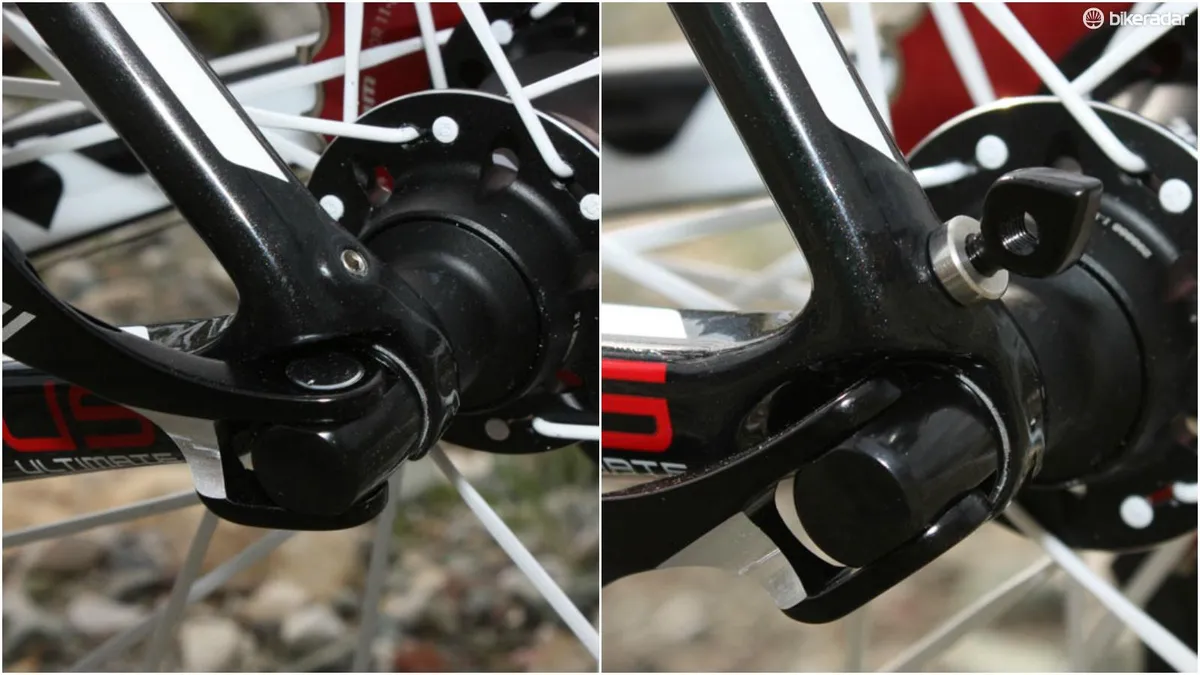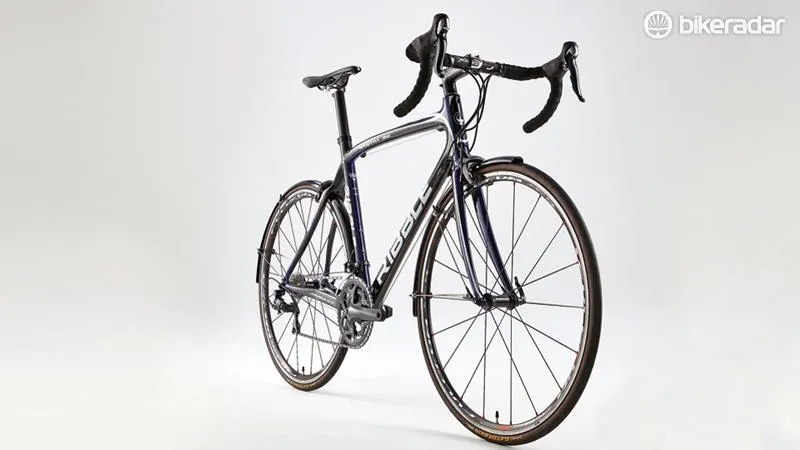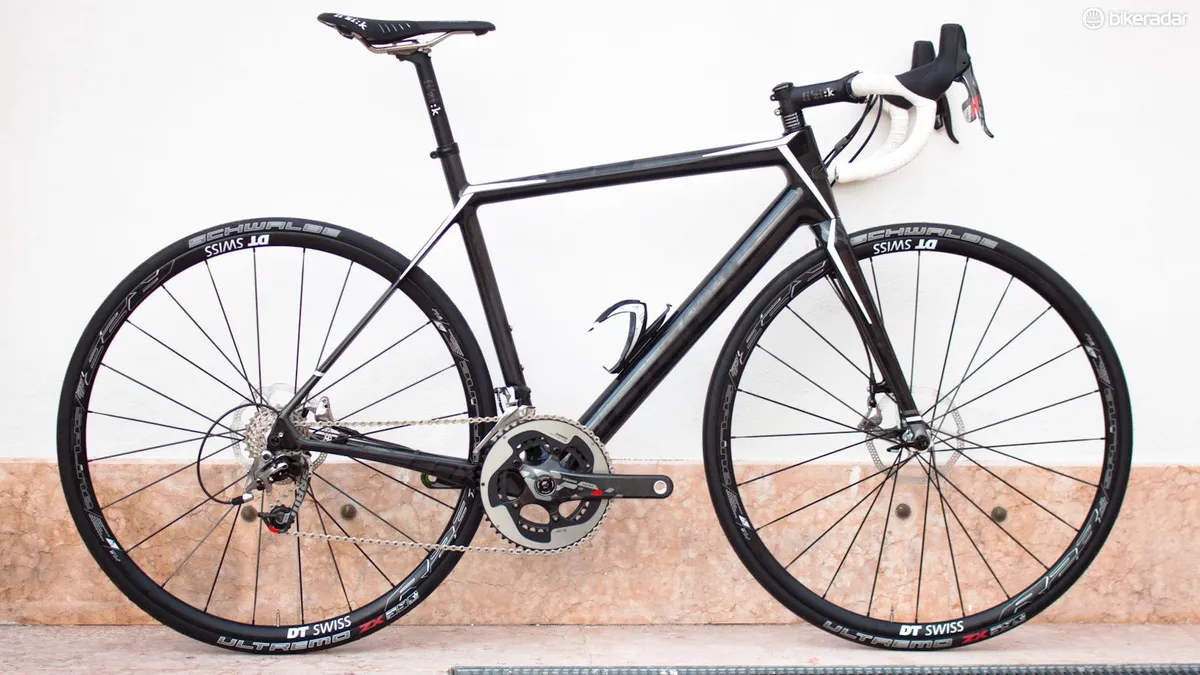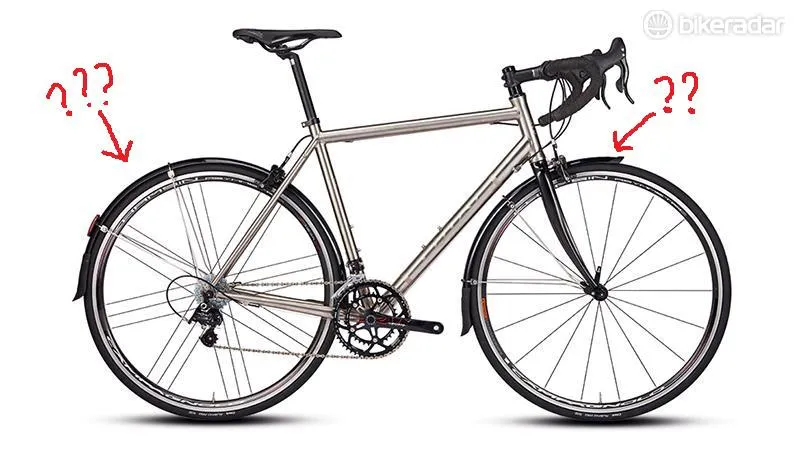Mudguards (or fenders if you're from North America) are great. If you don't agree, that's because you're wrong. They make riding in horrible conditions a whole lot more bearable, and done right, they can be a tasteful complement to your bike rather than a necessary evil.
Small accessory 'guards like Ass Savers are certainly useful, but when I see a roadie fully fendered I know they mean business: it's the mark of a serious cyclist who's committed fully to taking on the elements.

The problem is, many large, mainstream manufacturers either don’t put mounts for mudguards on their road bikes, or if they do, it's only on their most basic, entry-level models. There are some honourable exceptions: Trek, for example, still puts neat hidden mounts on its whole Domane endurance range. (An idea that I think – correct me if I’m wrong – originated with the Gary Fisher range.) By and large, however, mid- to high-end bikes seem to be designed on the assumption that people won’t use them when it’s raining – and that just seems silly if you live in a part of the world where water falls from the sky a good deal of the time.

I'm a believer in the right bike for the right job: I'd prefer my poor-weather bike to have cheap consumables (105 cassettes rather than Dura-Ace...) and tougher tyres so I'm not fixing punctures with frozen hands, but that doesn't mean I want to spend six months of the year riding something incredibly basic just so I can keep my feet and backside dry. And I don't see why I should be limited to bikes made of metal – why are there so few carbon bikes that take proper 'guards?



It may be slightly more complicated to add bosses to a carbon frame than to a metal one because of structural constraints, but doing so is hardly beyond the skills of our better bike designers. What’s frustrating is that aside from a tiny incremental cost to the manufacturer, there’s not really any downside to providing at least limited fender provision on many bikes.
The weight penalty is minuscule in most cases and with smart design, as in the Trek example above, there's no need for unused mounts to interfere aesthetically.
Frustratingly, while the move to discs has spawned an abundance of fun, capable bikes with huge clearances that should be perfect for mudguards, those above a certain price level almost invariably omit mounts.
A cynical person might think the bike industry is conspiring to limit versatility; why sell a single bike ready for rain or shine, tarmac or gravel, when you can sell four different bikes, each satisfying its own tiny niche?
We all love to fantasise about n+1 bikes, but the reality is that most of us have limited space and limited funds to support our habit. If I'm spending a month's income on a single bicycle, I want to get as much out of it as possible.

The fact that mudguard-lovers are so poorly served by current offerings might reflect that the demand simply isn't there, or that if it is, it's confined to markets too small to have a global impact.
The UK is plenty wet however, and the bike industry here isn't exactly tiny (most estimates seem to value it in the £1bn/$1.4bn range), so I suspect there's an issue of chicken and egg. We can't vote with our wallets for something that doesn't exist, so we take what we can get.
In other respects, we arguably live in a golden age of bike equipment, with mid-level componentry that's astonishingly good and fierce competition between big brands driving incredible value. Little details like mudguards get lost in the mix – they're just not enough of a priority.
It's perfectly true that with aftermarket accessories or some ingenuity, you can fit fenders to many road bikes that aren't designed for them, but that's not the point. The point is, I shouldn't have to. I don't want half measures and clumsy lash-ups on my otherwise lovely machines.
I want fancy, high performance bikes that I can ride every day, in all weathers, with a dry arse and a smile on my face.

